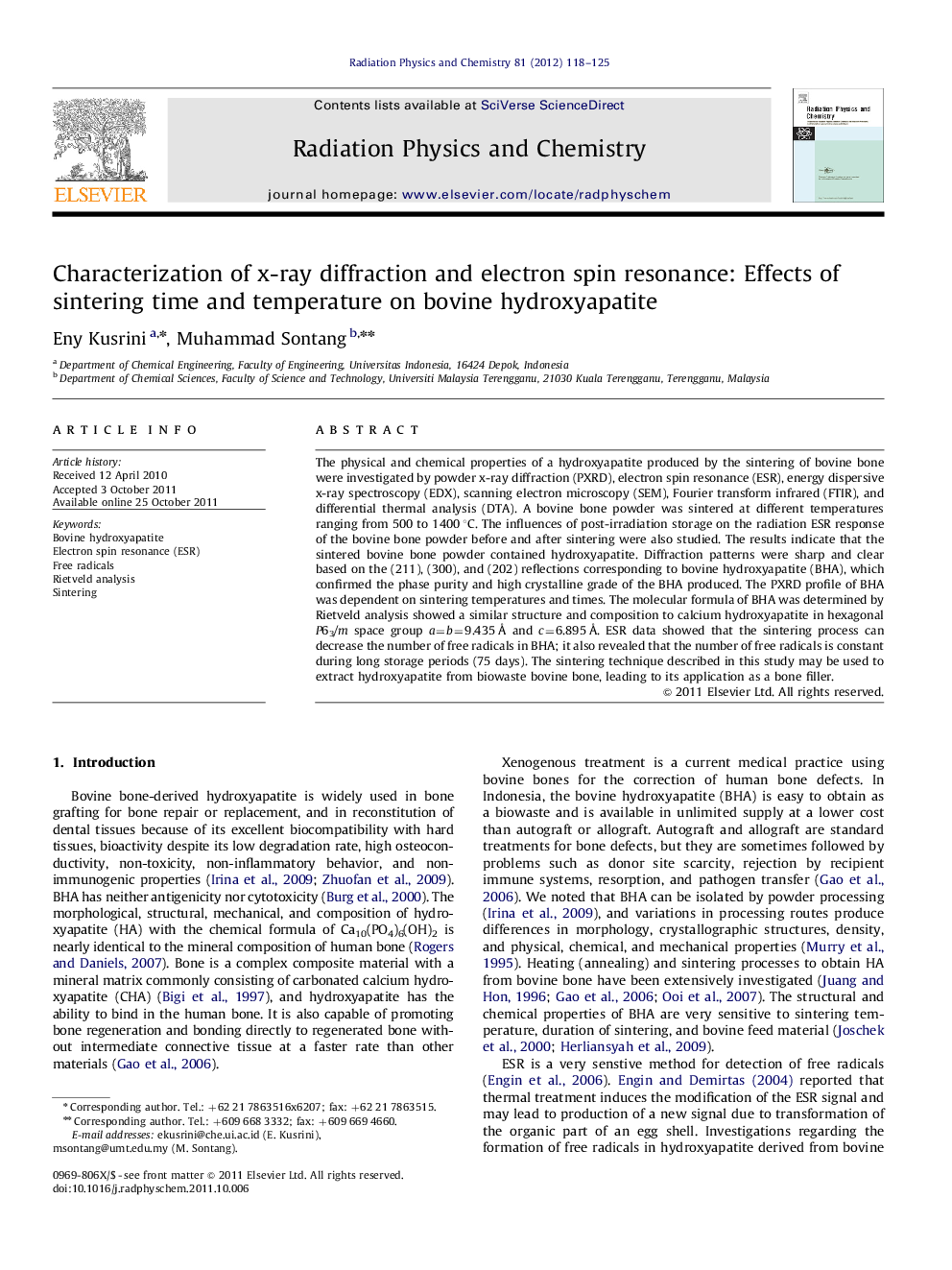| کد مقاله | کد نشریه | سال انتشار | مقاله انگلیسی | نسخه تمام متن |
|---|---|---|---|---|
| 1886429 | 1043524 | 2012 | 8 صفحه PDF | دانلود رایگان |

The physical and chemical properties of a hydroxyapatite produced by the sintering of bovine bone were investigated by powder x-ray diffraction (PXRD), electron spin resonance (ESR), energy dispersive x-ray spectroscopy (EDX), scanning electron microscopy (SEM), Fourier transform infrared (FTIR), and differential thermal analysis (DTA). A bovine bone powder was sintered at different temperatures ranging from 500 to 1400 °C. The influences of post-irradiation storage on the radiation ESR response of the bovine bone powder before and after sintering were also studied. The results indicate that the sintered bovine bone powder contained hydroxyapatite. Diffraction patterns were sharp and clear based on the (211), (300), and (202) reflections corresponding to bovine hydroxyapatite (BHA), which confirmed the phase purity and high crystalline grade of the BHA produced. The PXRD profile of BHA was dependent on sintering temperatures and times. The molecular formula of BHA was determined by Rietveld analysis showed a similar structure and composition to calcium hydroxyapatite in hexagonal P63/m space group a=b=9.435 Å and c=6.895 Å. ESR data showed that the sintering process can decrease the number of free radicals in BHA; it also revealed that the number of free radicals is constant during long storage periods (75 days). The sintering technique described in this study may be used to extract hydroxyapatite from biowaste bovine bone, leading to its application as a bone filler.
► Natural hydroxyapatite was produced from the bio-wasting bovine bones by sintering method.
► PXRD profile of BHA is dependent on the different temperatures and times in sintering process.
► ESR data is useful to study the typical of free radicals formed in the samples after irradiation.
► Stability and physicochemical properties of BHA is dependent on the different storage times.
► Technique is able to be used to find the natural hydroxyapatite applicable for bone filler.
Journal: Radiation Physics and Chemistry - Volume 81, Issue 2, February 2012, Pages 118–125